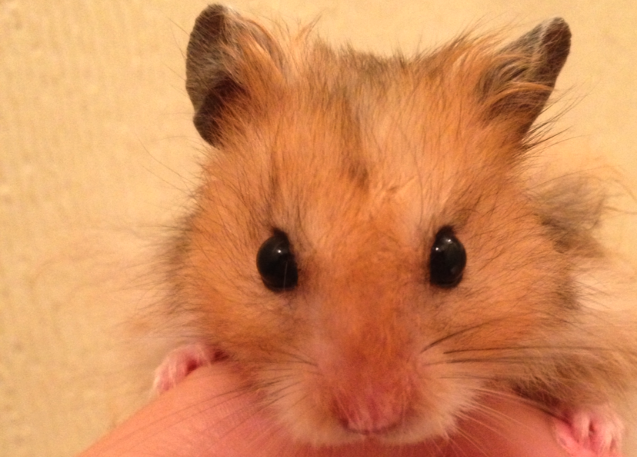
Photo copyright Erica Peachey, www.ericapeachey.co.uk
Golden hamsters that live in the wild are often hunted and eaten by feral cats and dogs (Mcphee et al., 2009). The very smell of cats and dogs probably terrify them, as much of their communication is by scent. We know that laboratory rats become fearful and stressed if they are exposed to the smell of a cat. Hamsters probably also have this instinctive fear. A test with Campbell’s hamsters showed how terrified they became by the smell of cat urine. When it was put in their cage the male babies grew up with reduced fertility and the litter sizes of the females were smaller too (Vasilieva 2000).
So it is important to keep the family cat or dog further enough away from the hamster cage where they can neither be seen nor smelled. Many cats will want to sit near the cage, or even on top of it, to eye the hamster. This is their natural reaction to a small animal which they would enjoy hunting. So locate the cage out of the way of the cat – to reduce stress and fear in your hamster.
And remember it isn’t just the sight of the cat or dog they fear. It is also the smell and perhaps the sound it makes. Scent is more important to your hamster than sight (Albright & de Matos 2010). So ideally, cats should be kept out of the room where there is a hamster. Luckily if a cat tries to attack a hamster through the cage bars, it is quite likely to get bitten. “More hamsters bite cats than cats bite hamsters,’ the late Pamela Milward of the Southern Hamster Club told me.
Will the family cat eat your hamster if it escapes from its cage? Yes most of the time it will. But occasionally the cat does not, because the hamster smells not just of itself but of the human family that have been handling it. Thus the cat, as it were, recognises the family smell and therefore treats the hamster as one of the family. However you cannot rely on this.
For the safety and happiness of your hamster, keep it safe from cats and dogs and away from their odour.
REFERENCES
Albright, J. & de Matos, R., (2010), ‘Hamsters,’ in ed Tynes, V. V., Behaviour of Exostic Pets, Chichester, UK, Blackwell-Wiley.
Mcphee, M. E., Segal, A. & Johnston, R. E., (2010), ‘Hamsters Use Predator Odors as Indirect Cues of Predation Risk,’ Ethology, 116, 517-523.
Vasilieva, N.Y., Cherepanova E.V., von Holst, D. & Apfelbach., (2000), ‘Predator odour and its impact on male fertilityand reproduction in Phodopus campbelli hamsters,’ Naturwissenschaften, 87,312–314